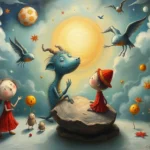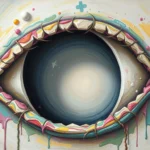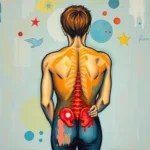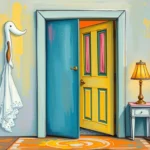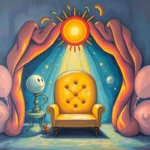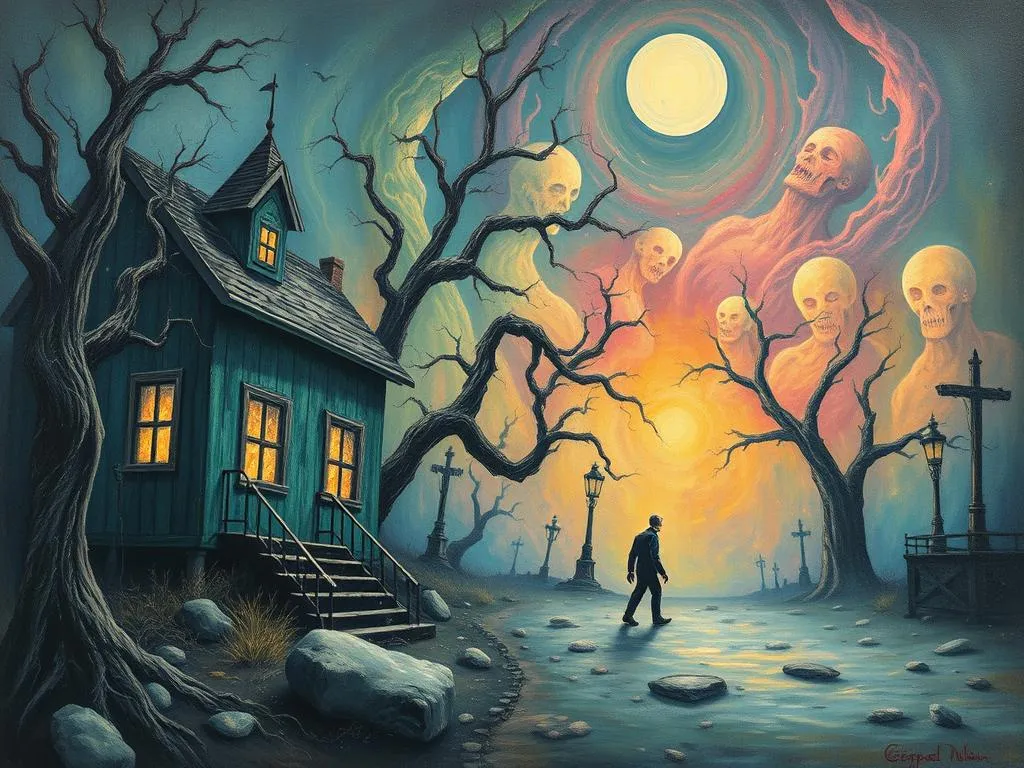
Dreams have long been a source of fascination and mystery, serving as windows into our subconscious. The imagery, emotions, and narratives that unfold while we sleep can reflect our innermost fears, desires, and conflicts. Among the myriad themes that can emerge in dreams, horror films stand out as particularly intriguing symbols. They often evoke strong emotional responses and tap into primal fears, making them rich material for psychological exploration. This article aims to explore the significance of horror film imagery in dreams, delving into their symbolism, variations, and their connections to our waking lives.
Symbolism and Meaning
Horror films, by their very nature, are laden with symbolism that can resonate deeply within our unconscious minds. They often represent fear, anxiety, and the darker aspects of human experience. When horror film elements appear in dreams, they can serve as metaphors for personal struggles or societal issues. For instance, a monstrous figure might symbolize an unresolved conflict or a fear that one is grappling with in their waking life.
The setting of a horror film often contributes significantly to its overall impact. Dark alleys, haunted houses, and desolate landscapes can mirror feelings of isolation, vulnerability, or even impending doom. These dream environments can indicate feelings of being trapped or overwhelmed in real life. A dream featuring a haunted house, for example, may suggest that the dreamer is confronting past traumas or unresolved emotions that linger and haunt their current life.
Characters in horror films can also hold profound meanings. For example, a villain or monster may represent external threats or internal conflicts, such as feelings of inadequacy or self-doubt. Alternatively, a victim may symbolize the dreamer’s own feelings of helplessness. This duality reflects the complexity of our emotions; we may identify both with the hunter and the hunted in various aspects of our lives.
Another important symbol in horror films is the climax or moment of terror. This critical juncture often represents a pivotal moment in the dreamer’s life, where they must confront their fears or make significant decisions. The way the dreamer reacts to this climax can provide insight into their coping mechanisms and resilience.
Ultimately, horror films in dreams can serve as powerful reflections of the dreamer’s psyche, illuminating fears that may not be consciously acknowledged. Engaging with these symbols can lead to personal growth and self-discovery, providing an opportunity to confront and process deep-seated emotions.
Key Scenarios and Variations
The variations of horror film dreams can significantly shape their interpretations. For instance, dreaming of a chase scene, where the dreamer is pursued by an unseen force, can indicate feelings of anxiety or pressure in waking life. This scenario may represent a situation the dreamer is trying to avoid, whether it be a deadline, a relationship, or a confrontation. The intensity of the chase can highlight the urgency of these feelings and the need to address them.
Conversely, a dream where the dreamer becomes the villain can reveal an internal struggle with darker aspects of oneself. This scenario may reflect feelings of guilt, shame, or aggression that the dreamer has yet to acknowledge. By embodying the antagonist, the dreamer is confronted with the parts of themselves they may wish to suppress. This can be a powerful catalyst for self-reflection and integration of one’s shadow self.
Another common variation is the haunted location, such as an abandoned building or a graveyard. These settings can symbolize the dreamer’s connection to their past. They may represent unresolved issues, old wounds, or memories that continue to influence their present. Exploring these spaces in a dream can encourage the dreamer to confront their history and recognize how it shapes their current behavior and relationships.
Additionally, the presence of supernatural elements, such as ghosts or demons, can indicate feelings of guilt or fear of the unknown. These figures often embody the dreamer’s unresolved issues or anxieties about the future. Dreams featuring these elements may prompt the dreamer to assess what fears they need to confront in their waking life and what steps they can take to move forward.
The nature of the horror itself can also vary. A dream filled with psychological terror, such as a feeling of being watched or stalked, can indicate feelings of paranoia or insecurity. In contrast, a more fantastical horror, such as monsters or supernatural beings, might symbolize deeper, more existential fears or the unknown aspects of life.
By examining these variations, dreamers can gain a more nuanced understanding of their experiences. Each scenario holds unique meanings that can shed light on the dreamer’s emotional state and life circumstances, prompting deeper inquiry into their inner worlds.
Real-Life Connections and Takeaways
Understanding the themes and symbols present in horror film dreams can empower individuals to connect these nocturnal narratives to their real-life situations. For instance, if a dreamer frequently finds themselves in scenarios where they are being chased, it may be beneficial to reflect on what in their waking life feels overwhelming or threatening. Are there obligations or relationships that they feel pressured by? By identifying these sources of anxiety, the dreamer can take proactive steps to address them, whether through open communication, setting boundaries, or seeking support.
Moreover, engaging with the characters in horror film dreams can prompt valuable self-reflection. If a dreamer identifies with a victim, they may need to explore feelings of powerlessness or vulnerability in their waking life. This realization can lead to empowerment, as they recognize their ability to change their circumstances and reclaim their agency.
In instances where a dreamer embodies the villain, it may lead to confronting uncomfortable emotions. Understanding these feelings, rather than suppressing them, can foster personal growth and healing. It’s essential to recognize that everyone has complexities and flaws, and embracing these aspects can lead to greater self-acceptance.
Additionally, considering the dream environment can provide insights into the dreamer’s mental and emotional state. A dark, claustrophobic space may indicate feelings of isolation or depression, while a more open, illuminated setting could suggest a yearning for freedom or clarity. By reflecting on these environments, dreamers can assess whether their current life circumstances align with their emotional needs and aspirations.
As readers seek to connect their horror film dreams to their waking realities, maintaining a dream journal can be a valuable tool. Writing down dreams immediately upon waking can help capture the vivid details and emotions associated with them. Over time, patterns may emerge that can provide deeper insights into recurring themes and concerns.
In conclusion, horror films serve as powerful symbols in dreams, acting as gateways to our subconscious minds. By exploring their symbolism, variations, and real-life connections, dreamers can uncover valuable insights about their fears, desires, and emotional landscapes. Engaging with these dreams offers an opportunity for self-reflection and empowerment, as individuals confront the darker aspects of their psyche and emerge with a greater understanding of themselves. As you navigate your own dreams, consider how horror film symbols may resonate with your experiences, and allow these nocturnal narratives to guide you toward personal growth and emotional healing.
